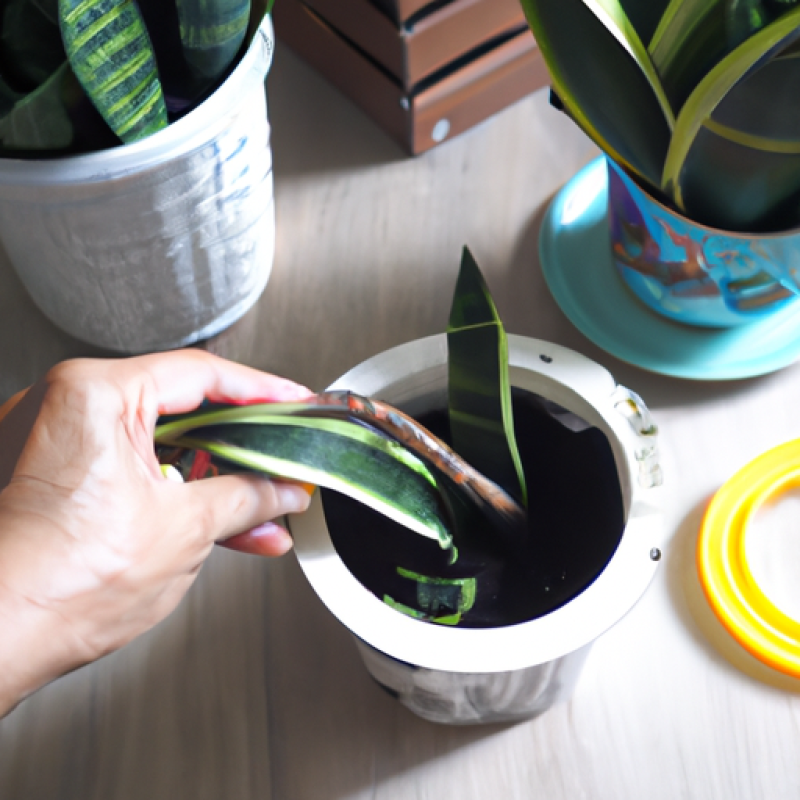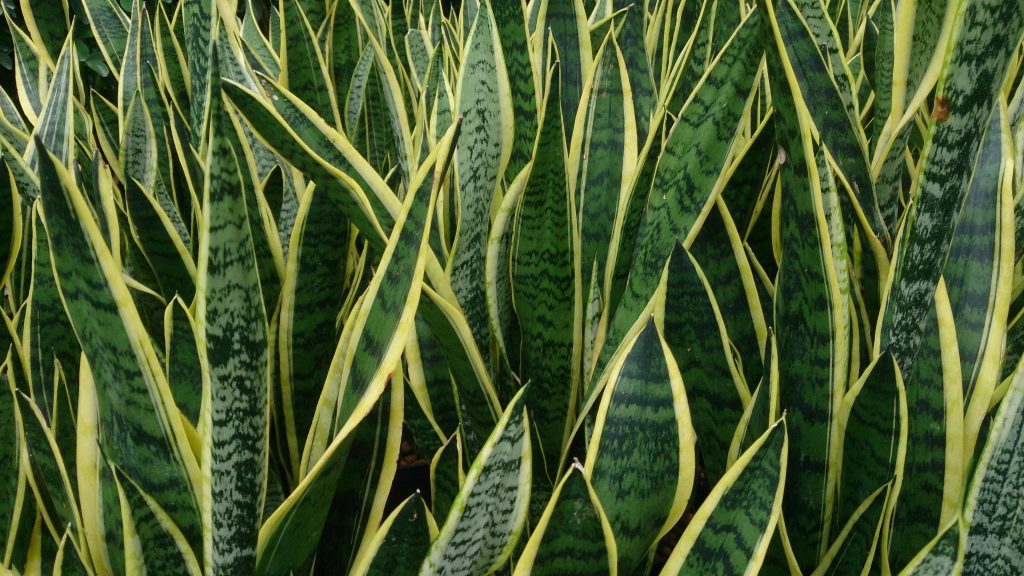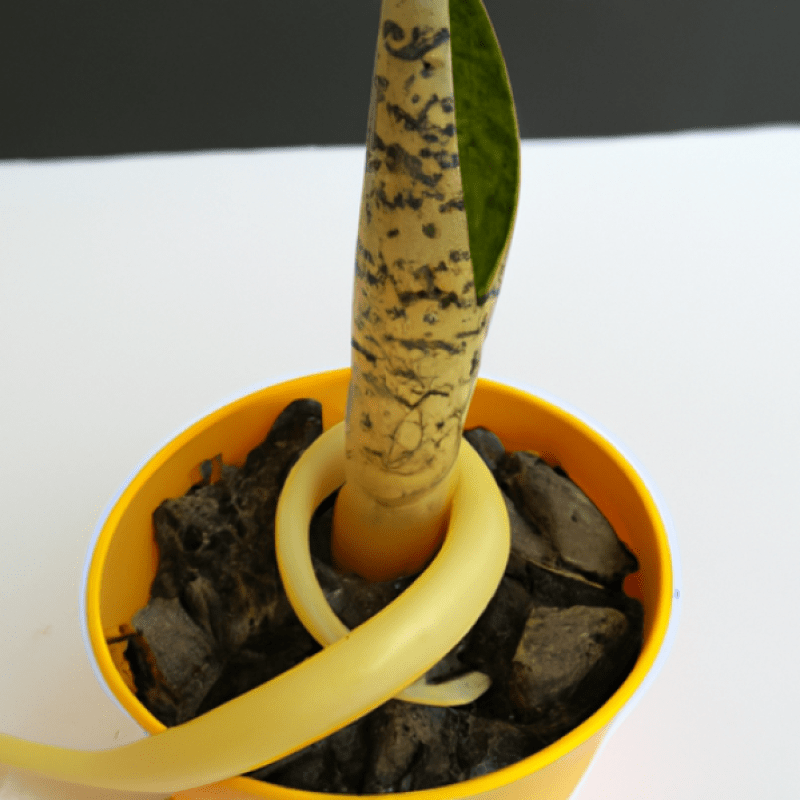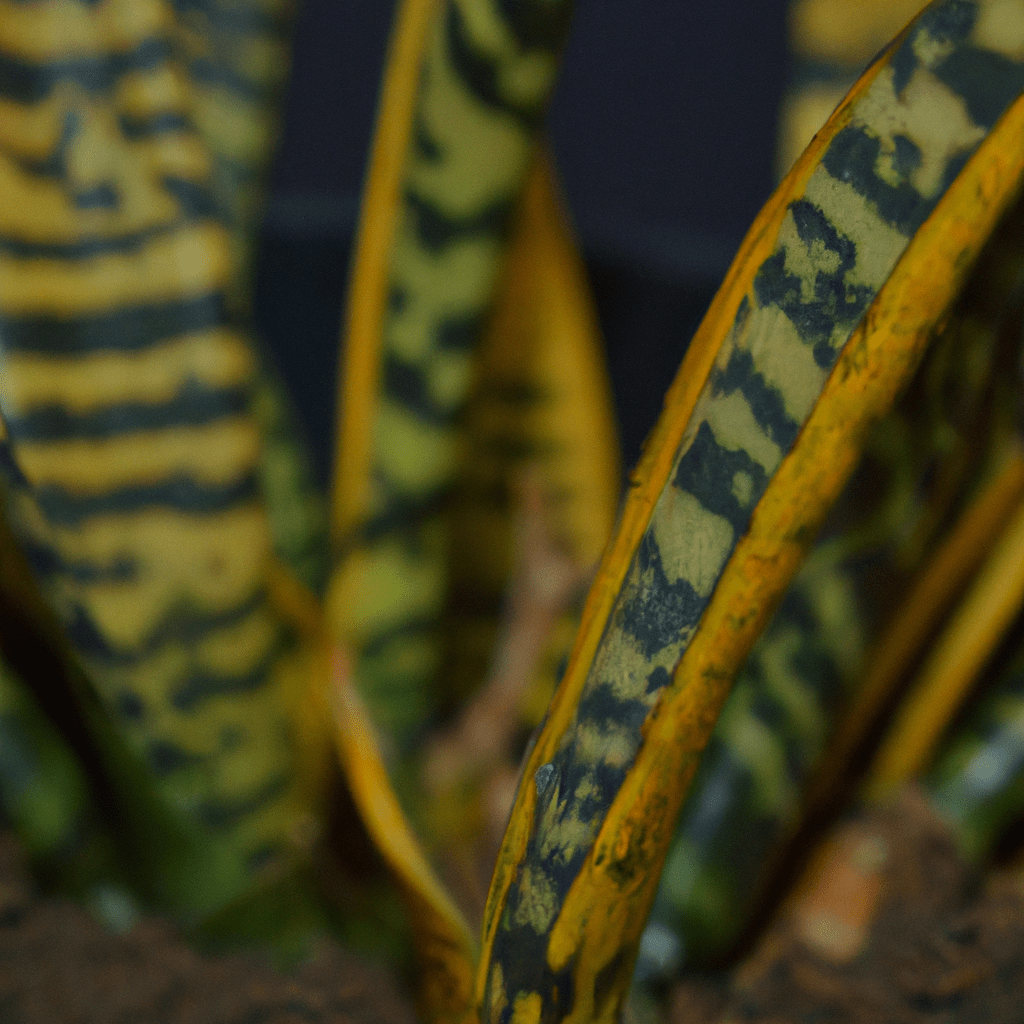Sansevieria Fernwood Mikado, also known as the snake plant, is an excellent addition to any indoor plant collection. They are not only easy to care for but also air-purifying, making them perfect for those who lack a green thumb. If you’re a proud owner of a Sansevieria Fernwood Mikado, or you’re planning to bring one home, you might have a few questions on how to take care of it. Well, fret not, my friend! We have compiled a list of 20 questions that will help you take care of your Sansevieria Fernwood Mikado like a pro. So, let’s get started, shall we?
1. How often should I water my Sansevieria Fernwood Mikado?
Sansevieria fernwood mikado requires minimal watering. You should water it only when the soil is completely dry. Overwatering can lead to root rot, which may result in the plant’s death. The frequency of watering may vary depending on the temperature and humidity levels in your environment, so it’s essential to check the soil’s moisture level regularly. It’s best to water this plant from the bottom to prevent water from getting on the leaves, which can cause fungal diseases. Make sure to use well-draining soil and a pot with drainage holes to avoid waterlogging.
2. What type of soil does Sansevieria Fernwood Mikado prefer?
Sansevieria Fernwood Mikado prefers well-draining soil with a pH range of 6.0 to 7.5. The soil should be slightly acidic to neutral and have good aeration. A mix of succulent soil, perlite, and sand is suitable for this plant. It is important to avoid overwatering and to allow the soil to dry out completely between waterings. This plant is tolerant of drought conditions and can survive in low-nutrient soil, but it will benefit from occasional fertilization with a balanced fertilizer.
3. Can Sansevieria Fernwood Mikado tolerate low light conditions?
Sansevieria Fernwood Mikado is a species of snake plant that is known for its ability to tolerate low light conditions. While it prefers bright, indirect light, it can survive in low light conditions as long as it is not completely deprived of light. However, the plant may grow more slowly and produce smaller leaves in low light conditions. It is important to note that overwatering in low light conditions can lead to root rot, so it is important to allow the soil to dry out between waterings and to use a well-draining soil mix. Overall, Sansevieria Fernwood Mikado can tolerate low light conditions, but it will thrive in brighter light.
4. How often should I fertilize my Sansevieria Fernwood Mikado?
Sansevieria Fernwood Mikado is a slow-growing plant that requires minimal fertilization. The frequency of fertilization depends on the growth rate and age of the plant. During the growing season, which is typically from spring to early summer, fertilize the plant every two to four weeks with a balanced fertilizer. Reduce the frequency of fertilization during the dormant season, which is from late summer to winter, to once every two months. Over-fertilization can cause damage to the plant, so it’s essential to follow the recommended dosage instructions. The soil should also be well-draining and moist but not waterlogged.
5. Does Sansevieria Fernwood Mikado need to be repotted?
Sansevieria Fernwood Mikado has a slow growth rate and can thrive in its original pot for many years. However, if the plant has outgrown its container or the soil is compacted, it may be necessary to repot the plant. Signs that a Sansevieria Fernwood Mikado needs to be repotted include roots growing out of the drainage holes, the plant leaning to one side, or the soil drying out quickly after watering. When repotting, choose a pot that is only slightly larger than the current one and use well-draining soil. Repotting should be done in the spring or summer when the plant is actively growing.
6. How tall can Sansevieria Fernwood Mikado grow?
Sansevieria Fernwood Mikado is a tall-growing species of snake plant, with slim, cylindrical leaves that can reach up to 3 feet in height. This plant is known for its impressive stature and striking appearance, making it a popular choice for indoor and outdoor gardens alike. However, it is important to note that the ultimate height of each individual plant may vary depending on a variety of factors, including growing conditions, soil quality, and overall care. With proper attention and maintenance, Sansevieria Fernwood Mikado has the potential to grow into a stunning and impressive specimen that will add beauty and interest to any space.
7. Can Sansevieria Fernwood Mikado be grown indoors?
Sansevieria Fernwood Mikado is a type of snake plant that can be grown both indoors and outdoors. It is a low-maintenance plant that thrives in low light and can tolerate infrequent watering. This makes it a great option for those looking to add some greenery to their indoor space without having to worry about constant upkeep. When growing Sansevieria Fernwood Mikado indoors, it is important to provide it with well-draining soil and to keep it out of direct sunlight. With proper care, this plant can grow up to 3 feet tall and add a touch of natural beauty to any room.
8. How can I propagate Sansevieria Fernwood Mikado without harming it?
To propagate Sansevieria Fernwood Mikado without harming it, you can use several methods, including division, leaf cuttings, or offsets. Division involves separating the plant into smaller sections and replanting them in new pots. Leaf cuttings involve cutting a leaf into sections and planting them in soil or water until they form roots. Offsets are small plantlets that grow on the mother plant and can be carefully separated and replanted. Whichever method you choose, it’s important to ensure that the plant is healthy and well-watered before attempting propagation. Additionally, proper care should be taken during the process to avoid damaging the plant’s roots or leaves.
9. Is Sansevieria Fernwood Mikado toxic to pets?
The Sansevieria Fernwood Mikado plant is not considered to be toxic to pets, according to the American Society for the Prevention of Cruelty to Animals. However, it is still important to keep an eye on pets around this plant, as ingesting large amounts of any plant material can cause gastrointestinal upset or other health issues.
10. Can Sansevieria Fernwood Mikado survive in a humid environment?
Sansevieria Fernwood Mikado can tolerate some humidity, but it is not ideal for its growth. This plant prefers arid conditions with low levels of moisture in the air and well-draining soil. High humidity can lead to root rot and other fungal diseases that can harm the plant. It is best to keep the Fernwood Mikado in a well-ventilated area with low to moderate humidity levels to promote its health and vitality. Additionally, proper watering and soil drainage are crucial to prevent the plant from suffering in a humid environment.
11. How do I prevent root rot in Sansevieria Fernwood Mikado?
One potential method for preventing root rot in Sansevieria Fernwood Mikado is to ensure that the plant is in a well-draining soil mixture and that the pot it is in has adequate drainage holes. Overwatering should be avoided, and the soil should be allowed to dry out partially between waterings. Additionally, it may be helpful to avoid placing the plant in overly humid or damp environments, as this can contribute to the growth of harmful bacteria or fungi. Regularly inspecting the plant for signs of rot or disease and promptly addressing any issues can also help to prevent further damage.
12. Can Sansevieria Fernwood Mikado grow in a small container?
Sansevieria Fernwood Mikado can tolerate growing in a small container, but it may not thrive in such conditions. As with any plant, the container size should be appropriate for the root system to prevent the plant from becoming root-bound. Additionally, a smaller container may require more frequent watering and fertilization to ensure the plant has adequate nutrients and moisture. It is important to monitor the plant closely and adjust care as needed to promote healthy growth.
13. How often should I clean the leaves of Sansevieria Fernwood Mikado?
Sansevieria Fernwood Mikado is a succulent plant that requires little maintenance compared to other plants. It is recommended to clean the leaves of Sansevieria Fernwood Mikado once a month to remove dust and maintain their luster. However, if you notice any signs of pests or diseases, it is essential to clean the leaves immediately to prevent further damage. Over-cleaning the leaves can stress the plant and affect its growth, so it is essential to strike a balance between cleaning the leaves and providing the plant with adequate care.
14. Can Sansevieria Fernwood Mikado be grown in a hanging planter?
Sansevieria Fernwood Mikado can be grown in a hanging planter, but it is important to consider several factors before doing so. Firstly, the planter should be large enough to accommodate the plant’s root system and provide ample space for growth. Secondly, the planter should have good drainage to prevent waterlogging and root rot. Additionally, Sansevieria Fernwood Mikado prefers bright, indirect sunlight and well-draining soil. If these conditions are met, growing Sansevieria Fernwood Mikado in a hanging planter can be a unique and visually appealing way to display this popular houseplant.
15. How do I control pests on Sansevieria Fernwood Mikado?
One of the most effective ways to control pests on Sansevieria Fernwood Mikado is through regular inspections and cleaning. Remove any dead leaves or plant debris, as this can attract pests. Additionally, you can use insecticidal soap or neem oil to treat any infestations. Be sure to follow the instructions carefully and avoid applying the treatment during times of high heat or direct sunlight. It may also be helpful to introduce natural predators, such as ladybugs or lacewings, to help control pest populations.
16. What temperature range is suitable for Sansevieria Fernwood Mikado?
The Sansevieria Fernwood Mikado is a plant that is known for its hardy nature and ability to withstand a wide range of temperatures. However, like all plants, it has specific temperature requirements in order to thrive. The ideal temperature range for the Sansevieria Fernwood Mikado is between 60 and 85 degrees Fahrenheit. At temperatures below 50 degrees Fahrenheit, the plant may experience stunted growth or even die. On the other hand, temperatures above 90 degrees Fahrenheit may cause the plant to wilt or develop leaf burn. Overall, it is important to keep the Sansevieria Fernwood Mikado within its optimal temperature range in order to ensure healthy growth and development.
17. How do I know if my Sansevieria Fernwood Mikado needs more light?
Sansevieria Fernwood Mikado leaves will start to droop or become stretched out if they are not getting enough light. The leaves may also lose their vibrant green color and become pale or yellowish. On the other hand, if the leaves are turning brown or black, it may be a sign that they are getting too much direct sunlight. It is important to find a balance and provide the plant with bright, indirect light. Checking the soil moisture regularly and adjusting watering frequency can also help ensure the plant is getting adequate light.
18. Can Sansevieria Fernwood Mikado tolerate direct sunlight?
Sansevieria Fernwood Mikado is a hardy plant that can tolerate a wide range of light conditions, including direct sunlight. However, it is important to note that prolonged exposure to direct sunlight can lead to scorching of the leaves, especially during the hot summer months. Therefore, it is recommended to provide some shade during the hottest part of the day or to gradually acclimate the plant to direct sunlight. Additionally, it is important to ensure that the soil is well-draining and to avoid overwatering, as this can also cause damage to the plant.
19. How do I propagate Sansevieria Fernwood Mikado pups?
To propagate Sansevieria Fernwood Mikado pups, first identify the healthy offsets or pups growing from the base of the parent plant. Carefully separate the pups from the parent using a clean and sharp knife or scissors, making sure each pup has its own roots attached. Plant the pups in a well-draining soil mix, and water sparingly until they establish roots and begin to grow. It’s important to avoid overwatering or exposing the newly propagated plants to direct sunlight, as these can cause damage or stress to the young plants. With proper care, the new plants should grow and thrive in their new environment.
20. What is the best way to prune Sansevieria Fernwood Mikado?
To effectively prune a Sansevieria Fernwood Mikado, it is important to first assess the plant’s health and growth patterns. Generally, pruning should be done in the spring or summer months when the plant is actively growing. Dead or damaged leaves should be removed first, followed by any unwanted or unruly growth. It is important to use sharp, clean pruning shears and to make cuts just above the soil line. Overpruning can lead to stunted growth and decreased vitality, so it is important to strike a balance between maintenance and preservation. Regular pruning can help promote healthy growth and prevent overcrowding, but it should be done with care and consideration for the plant’s needs.
Congratulations! Now you’re a certified Sansevieria Fernwood Mikado expert! You’ve learned everything you need to know about taking care of this stylish houseplant and making sure it thrives in your home. Remember, it’s all about keeping things simple, providing the right amount of light, water and nutrition, and having some patience. Your Fernwood Mikado will reward you with its stunning beauty, air-purifying qualities, and low-maintenance nature. So go ahead and show off your green thumb skills to your friends and family, and enjoy the company of your new leafy friend!



